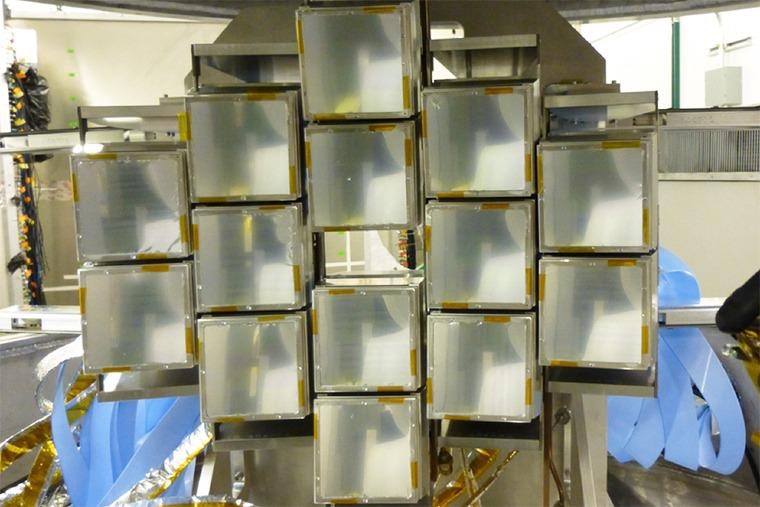Mar 31 2021
At the Washington University in St. Louis, scientists have announced the first-ever observations of a new form of fluorine, called the isotope 13F.
 Nuclear scientists at Washington University discovered a new isotope of fluorine using the High Resolution Array at the National Superconducting Cyclotron Laboratory. Image Credit: Michigan State University.
Nuclear scientists at Washington University discovered a new isotope of fluorine using the High Resolution Array at the National Superconducting Cyclotron Laboratory. Image Credit: Michigan State University.
The study was reported in the Physical Review Letters journal on March 30th, 2021.
The researchers achieved their breakthrough as part of an experiment that was carried out at the National Superconducting Cyclotron Laboratory at Michigan State University (MSU).
Fluorine is known to be the most chemically reactive element from the periodic table. Only one isotope, the stable isotope 19F, of fluorine can be found in nature.
In the new isotope, 13F, four neutrons are eliminated from the proton drip line, which is the boundary that demarcates the zone beyond which atomic nuclei tend to decay through the emission of a proton.
Robert J. Charity, research professor of chemistry in Arts and Sciences, and Lee G. Sobotka, professor of chemistry and of physics, achieved this breakthrough by jointly working with research teams from MSU, Western Michigan University, and the University of Connecticut.
Study of exotic nuclei with such large excesses of neutrons or protons is of considerable interest in understanding the synthesis of elements, even though their lifetimes are extremely short. Many of these isotopes have exotic properties.
Robert J. Charity, Research Professor of Chemistry in Arts and Sciences, Washington University in St. Louis
The 13F isotope is the fifth new isotope jointly discovered by Charity and Sobotka.
All the new isotopes are very proton-rich and unstable to the emission of protons. The highest-energy protons inside these isotopes can tunnel through the Coulomb barrier and escape.
Robert J. Charity, Research Professor of Chemistry in Arts and Sciences, Washington University in St. Louis
According to Charity, the first aim of the experiment was to create a new isotope of oxygen, named 'featherweight oxygen,' which is a technical advancement reported earlier in the Physical Review Letters journal. Following that breakthrough, the team revisited their data with utmost care and unraveled the proof for 13F.
The new fluorine isotope was synthesized through a charge-exchange reaction with a beam of 13O. (A neutron in the 13O is eliminated and substituted by a proton.)
Such charge-exchange reactions have not typically been used for the creation of the very proton-rich isotopes in the past. However, we are already planning a search for another new isotope using this reaction mechanism.
Robert J. Charity, Research Professor of Chemistry in Arts and Sciences, Washington University in St. Louis
This work was financially supported by the U.S. Department of Energy, Office of Science, Office of Nuclear Physics under award numbers DE-FG02-87ER- 40316, DE-FG02-04ER-41320, DE-SC0014552; and the National Science Foundation under grant PHY-156556.
Journal Reference:
Charity, R. J., et al. (2021) Observation of the Exotic Isotope 13F Located Four Neutrons Beyond the Proton Drip Line. Physical Review Letters. doi.org/10.1103/PhysRevLett.126.132501.